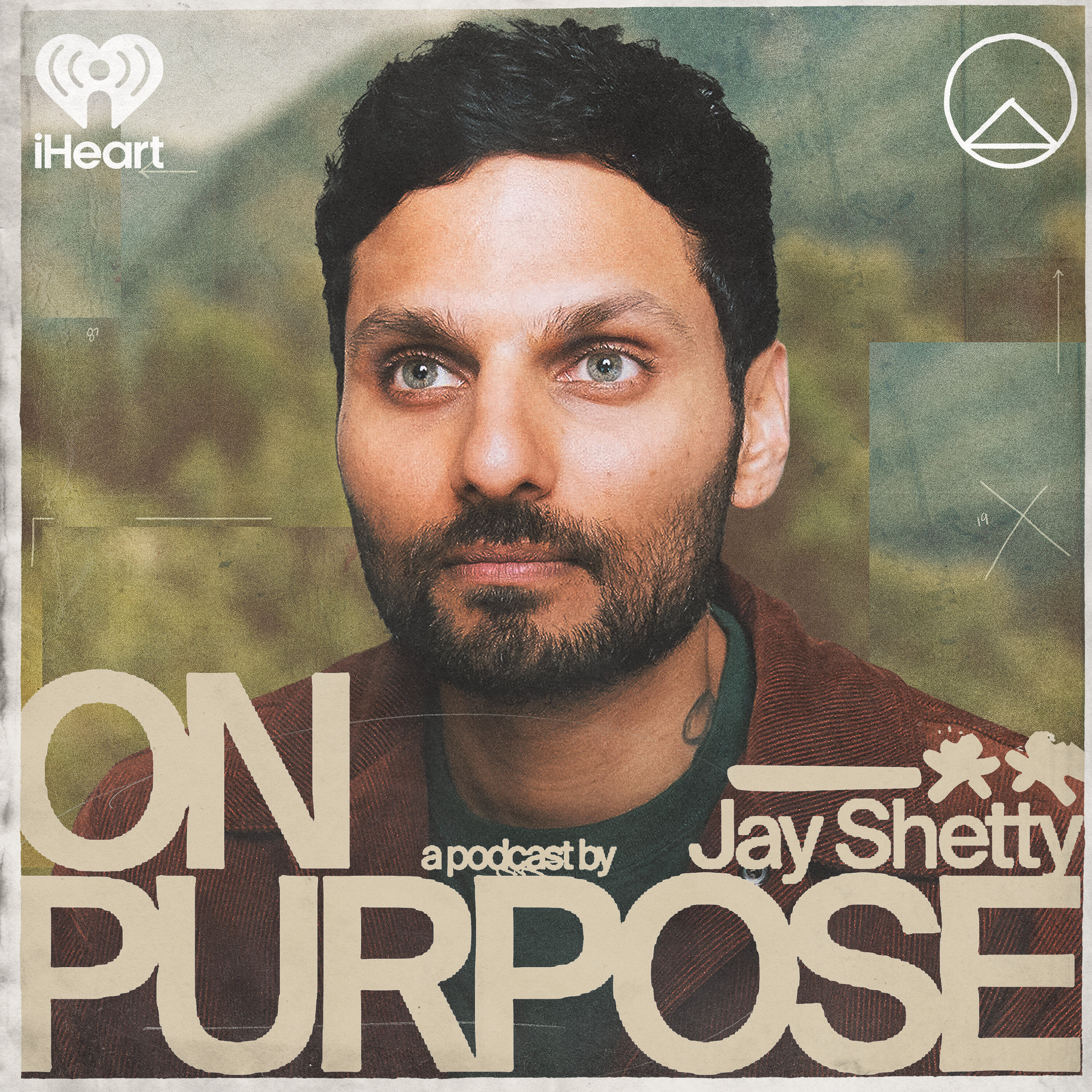
Roots of the Rise
Short episodes with grounded wisdom for healing, growth, and reconnecting to your true self.
Roots of the Rise is for the spiritually curious soul who’s already begun their inner work — but still feels like something deeper is calling. Maybe you’ve read the books, tried therapy, or dabbled in meditation, yet the same patterns keep circling back. You know there’s more to life than constant self-improvement, but you’re not sure how to live from that deeper truth you keep glimpsing.
Hosted by Sarah Hope — Ayurvedic health practitioner, spiritual mentor, meditation teacher, biodynamic craniosacral therapist, and energy healer — this podcast offers grounded wisdom for authentic alignment and the courage to rise into your truest self. Drawing from thousands of hours of client work, group facilitation, and her own journey through childhood trauma, grief, and the profound rediscovery of love and joy, Sarah offers a grounded, heart-led space for inner transformation.
Each short episode (10–20 minutes) offers honest reflections, spiritual insight, and simple practices to help you bridge the gap between knowing about growth and actually living it. You’ll leave feeling more centered, hopeful, and self-trusting — reminded that the path isn’t about striving to become someone new, but remembering who you’ve always been.
This podcast is for educational and entertainment purposes only. Sarah is not a licensed therapist, and nothing shared here is meant to replace the guidance of a physician, therapist, or any other qualified provider. That said, she hopes it inspires you to grow, heal and seek the support you need to thrive.
Roots of the Rise
Episode 91 - Feeling Without Drowning: How to Work With Your Deep Emotions
Most of us were never taught emotional regulation or mindfulness skills as kids, leaving us either overwhelmed by our feelings or completely numb to them. In this episode, you’ll learn a simple, step-by-step practice to help you feel your emotions without getting lost in them, so you can move through difficult experiences with greater ease, resilience, and self-compassion.
• Emotions are energy in motion—meant to flow through us rather than define us
• The language we use matters: saying “I’m experiencing anxiety” versus “I am anxious” creates healthy separation
• Inside Out brilliantly illustrates how emotions function like characters that take turns in the driver’s seat
• The RAIN protocol provides a mindfulness-based approach to emotional regulation: Recognize, Allow, Investigate, Nurture
• If your body is in fight-or-flight mode, the TIP technique can help: Temperature, Intense exercise, Paced breathing
• Visualizing emotions as characters supports emotional intelligence by creating distance and perspective
• Remember: you are a vessel for emotions, not the emotions themselves
Questions about this practice? Email me at rootsoftherise@gmail.com
Related Episodes
Episode 47 - The Second Chakra: Navigating Emotions, Sexuality, and Pleasure
Episode 48 - Your First Language Was Emotion—Are You Still Fluent?
Episode 12 - The Healing Power of Box Breathing: A Simple Technique for Stress Relief
Questions or Comments? Message me!
Stay connected by signing up for my newsletter or checking out all my offerings at www.risingwithsarah.com
Do you ever feel like your emotions are overwhelming you or that you're unable to feel them at all? You're not alone. Most of us were never taught how to handle emotions. We either stuff them down or get swallowed by them, and both leave us feeling powerless. In this episode, I'll show you a simple, step-by-step practice that helps you feel your emotions without getting lost in them or ignoring them, so you can move through any difficult emotion with more ease and self-compassion. Welcome back to Roots of the Rise with me, sarah Hope.
Speaker 1:Last time we started talking about emotional healing and today I want to expand on that, because it literally came up in session with a client about an hour after I recorded the last segment and then again today right before I was about to record this one. Both of these clients have trouble acknowledging their emotions, just like I used to. One of them has a hard time allowing herself to feel because every time she does, it feels like she might drown in the emotion, and that's really scary, especially because in the past that's led her down the road of addiction and eating disorders. The other one has a hard time feeling at all. As she put it, she grew up in the era of Oprah's. Like beatitudes. Gratitude is the attitude. And she has this belief that she recognizes intellectually is incorrect, but nevertheless she has this belief that if she ever feels anxiety or fear or worry, it's wrong, she's not trying hard enough, she's just not being spiritual enough. She needs to focus on the good and that'll fix things, except it doesn't. Do you hear yourself in either of these stories? They are not uncommon that you know difficulty, feeling much of anything or getting emotionally overwhelmed. In either scenario we often reach for coping mechanisms, ways to manage or bypass the intensity. But those coping strategies, they often end up numbing us or even hurting us more than helping. So why do we even do this? You know I touched on this in episodes 47 and 48 that I'll link below.
Speaker 1:But just pause and think about your emotional education as a child. Like were you allowed to feel If you grew up in the 70s, 80s, 90s? Like, probably not. You were likely told things like stop crying, don't be so dramatic, just get over it. You know, as a child you were expected to have the kind of emotional intelligence most adults don't have. Or maybe you became emotionally sensitive because you had to in order to stay safe. You had to be hypervigilant about your parents' moods, so you would know how to act, how to not set anyone off. You learned to be highly aware of emotions but not fully feel them. And when you do feel them, it can feel like you are the emotion I'm angry, I'm sad, I'm sad, I'm anxious. But that's not really how emotions work.
Speaker 1:Emotions are energy in motion. They are meant to flow through us, not define our entire identity. You know, some languages actually capture this better. They say I am having anger, I am feeling sadness.
Speaker 1:A great demonstration or illustration of this is actually the kids movie Inside Out. Have you seen it? It shows a child's mind through the lens of five emotions joy, fear, anger, distrust and sadness. And each is represented as its own character. And the movie highlights how these emotions they take turns. None of them are in control all the time. They each kind of take turns and alternate getting in the driver's seat. And it also shows how emotions respond to triggers. Something happens in the outside world and an emotion steps forward. This illustrates how emotions act as a feedback system. They give us information. Anger might appear because a boundary has been crossed. Sadness might show up when we feel loss. Anxiety might arise when we feel out of control.
Speaker 1:So what I wanted to do today is give you a protocol to follow a really practical approach to emotional regulation. So if you struggle with getting overwhelmed with emotions, you're immediately going to see how this might be useful. But also, if you have a hard time feeling, then I think this is equally useful because part of it is simply recognizing emotion, and so it's something you could do. If you realized, oh, I am feeling something, well, this can give you a kind of structure to go deeper into it in a really intentional kind of way. This is based on the RAIN protocol from Mindfulness-Based Emotional Processing. Gotta love a good acronym. So here we go.
Speaker 1:The first letter is R for recognize. So start by just acknowledging what you feel out loud. Recognize it I am feeling anger, sadness, anxiety. This separates the emotion from your identity. Labeling emotions has been shown in fMRI studies to reduce neural activation in the amygdala, easing distress. This is one of the simplest, easiest things you can do for emotional regulation naming it as something you are experiencing, not as who you are. So not I am anxious, but I am feeling anxiety. I know when I was first taught that emotion should be viewed as feedback and that it was important to say things like I am feeling anger instead of I'm angry, I thought, like this is just semantics, like does this really make this big of a difference? So it's okay if you're feeling a little skeptical I know I was but it actually does make a huge difference. The words that we use, the way that we talk to ourselves, impacts us on a really deep level. It can really change whether we identify as something or if we are fully recognizing that it's just an experience that's flowing through us. So R is for recognize, a is allow, don't push it away. Let the emotion be present.
Speaker 1:This is often the hardest part. If your body is in overdrive, high blood pressure, sympathetic fight or flight activation processing can feel impossible. So in those cases it's good to regulate your body first with another acronym, which is TIP, t-i-p, which is a practice from dialectical behavior therapy, which is like a form of cognitive behavioral therapy. So TIP, t stands for temperature. You can splash cold water on your face or hold ice to help calm your nervous system. I is intense exercise. Quick bursts of movement can help discharge stress. And then P is either paced breathing or paired muscle relaxation. So you can either do, you know, a different breathing practice, like box breathing that I've gone over before. Or you can go through a paired muscle relaxation where you basically just go from the top of the head to the toes, squeezing and releasing muscles. So squeezing both of your fists, for instance, and then letting them relax, squeezing your arms and then letting them relax, squeezing your shoulders, and so on. So these strategies combine mindfulness with emotional regulation, which can help your sympathetic nervous system reset. So we've got recognize and allow the I stands for.
Speaker 1:Investigate, ask questions about your emotion. Where is it in my body? What does it feel like in my body? So that would be things like where is this fear living? Oh, I feel it in my gut. It feels tight, it feels hot and heavy, it feels spiky and so, noticing these things, these subtle qualities of it, you also want to investigate what thoughts are accompanying the emotion. What is it trying to tell me? You might not have answers at first, and that is okay. Just return to this feeling of you know, recognizing and allowing and asking the questions. You know, often emotions just want to be acknowledged. So this is where mindfulness practices really do support emotional intelligence. Instead of reacting automatically, you pause, get curious and gather information. So we've got recognize, allow, investigate and then the N stands for non-identification and nurture, remind yourself, you are not your emotions.
Speaker 1:We started out highlighting the importance of this. I am feeling anger. Not, I am angry, but here you want to return to that. You can even go so far as to imagine the character, the feeling, rather as a character just like in that movie Inside Out. Exaggerate them if you like. Maybe anxiety is this like frazzled, wide-eyed person pulling out their hair, or maybe fear is a little kid, you know, hiding behind a chair. Talk to the character, ask what it's trying to tell you.
Speaker 1:I know this sounds ridiculous, guys, believe me, I've been there. But just give it a try. It's gonna feel weird. The first few times you do it. It is. It's going to feel awkward and uncomfortable and you know you might want to stop because of that weird factor. But don't Give it a go. Try it two or three times More, like five or ten times, if I'm being honest in order to start really getting a facility with talking to the emotion you're having, as opposed to feeling all encompassed by it.
Speaker 1:And you want to nurture the emotion too, and yourself for that matter, by being compassionate towards it and towards you, for that matter, by being compassionate towards it and towards you. You know, take supportive action, journal, talk to someone, do whatever you normally do to self-soothe, which hopefully is something supportive, not destructive. You know, take a walk, be kind to yourself. You know, this combination of mindfulness and compassion is the heart of healthy emotional regulation. Passion is the heart of healthy emotional regulation. So just to recap one last time the RAIN protocol is recognize, allow, investigate and nurture.
Speaker 1:So I share all of this today to say you are not your emotions, you are a vessel for them. You are a conduit, not the emotion itself. If emotions feel overwhelming, give this protocol a try and see how it helps. If you have any questions, please feel free to email me at rootsoftherise at gmailcom. I hope you have a wonderful rest of your day and remember, know who you are, love who you've been and be willing to do the work to become who you are today. Be willing to do the work to become who you are today. Just a quick reminder this podcast is for educational and entertainment purposes only. I am not a licensed therapist and nothing shared here is meant to replace the guidance of a physician, therapist or any other qualified provider. That said. I hope it inspires you to grow, heal and seek the support you need to thrive.
Podcasts we love
Check out these other fine podcasts recommended by us, not an algorithm.

Armchair Expert with Dax Shepard
Armchair Umbrella
Huberman Lab
Scicomm Media
Modern Wisdom
Chris Williamson
On Purpose with Jay Shetty
iHeartPodcasts
Where Should We Begin? with Esther Perel
Esther Perel Global Media
The Free Press Investigates
The Free Press
